Nepal is a residence to some of the richest and most diverse wildlife in Asia. Heaven for Bengal tigers, rare one-horned rhinos and a wide array of birdlife, its national parks can provide some spectacular wildlife encounters.

Nepal has become known as a biodiversity hotspot and no longer has any natural habitats remaining; instead, the country has established numerous national parks and reserves in order to provide protection for the diverse flora and fauna found within it. Many of the national parks such as Chitwan are protected by the army and they have bases inside the national park, which operate regular protection to stop poachers.
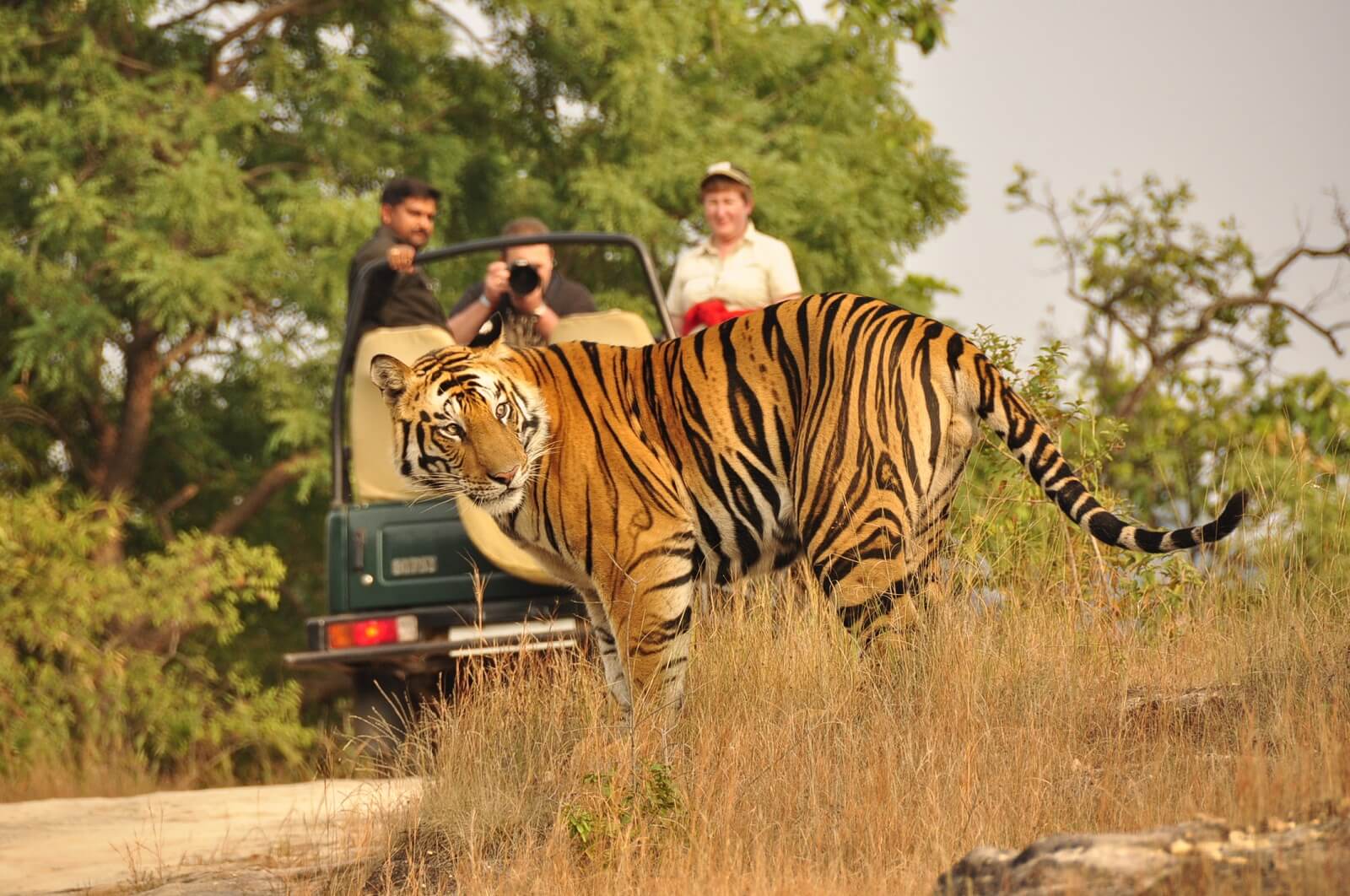
There are more than 185 species of mammals found within Nepal including the Bengal tiger, Bengal fox, clouded leopard, Indian rhinoceros, Indian elephant, marbled cat, red panda, snow leopard, and Tibetan wolf. The animals that have come to call Nepal their home aren’t confined to one part of the country but can be found in a variety of habitats across Nepal, from the Terai plains and thick forests to the snowy Himalayan Mountains.
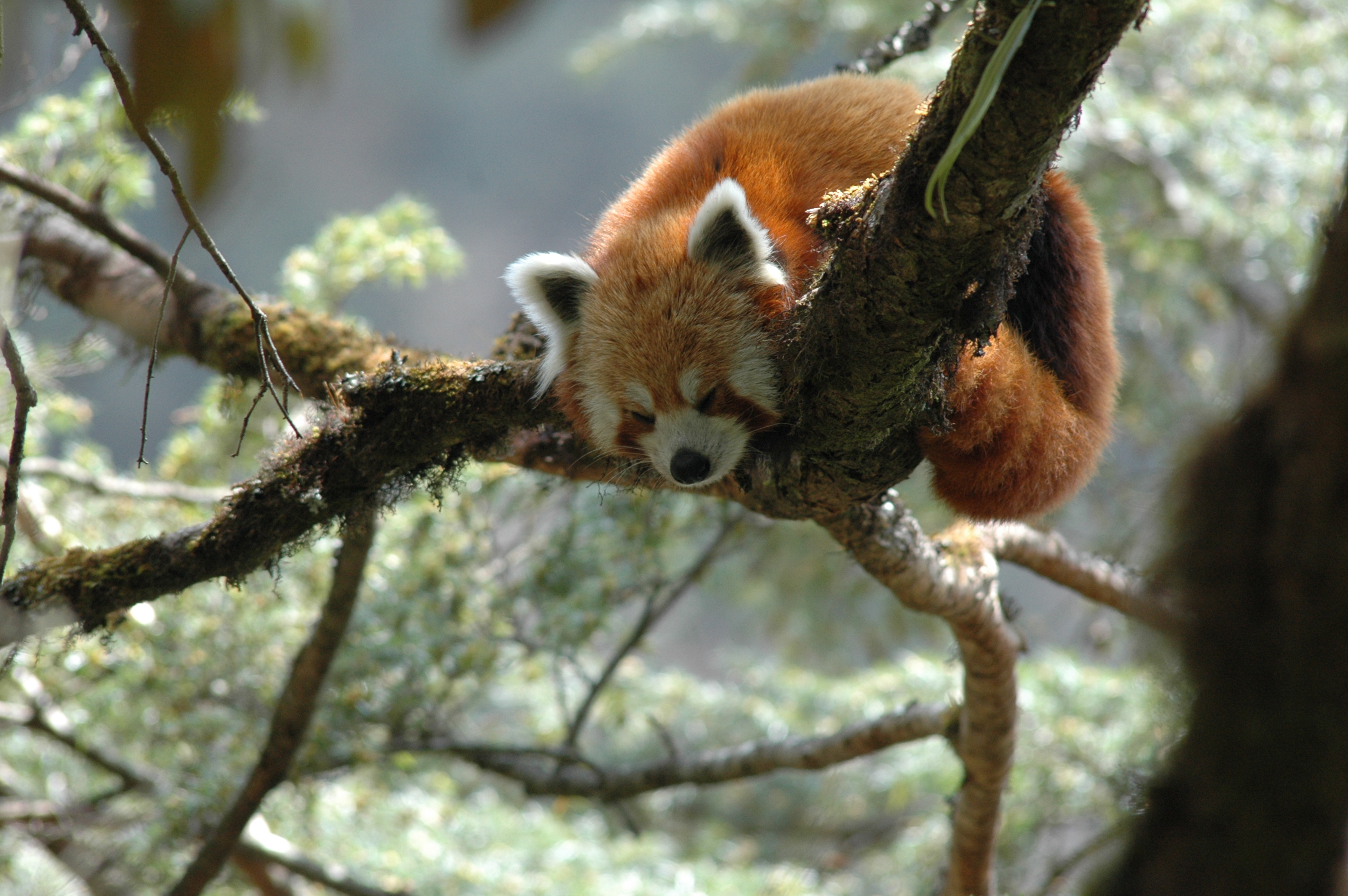
You are likely to encounter a selection of exotic animals in Nepal’s dense Terai jungles including the Asiatic elephant, Royal Bengal, the one-horned rhinoceros, monkey, hyena, jackal, antelope, wild boar, sloth bear and spotted deer. I was lucky enough to see black rhino, spotted deer, crocodile and wild boar in Chitwan National Park. The one-horned black rhino is commonly sighted, so most people will get to see a rhino on their game drive.

The western Terai jungles are home to swamp deer and wild buffalo can be found in the Koshi Tappu region, whilst endangered blackbucks can be found in the Bardia region. Nepal even has its own variety of dolphins which can be found in the Narayani and Karnali freshwater rivers and the elusive snow leopard has the vast Himalayan region as its domain. Other mammals living in high altitude areas are blue sheep, musk deer, yaks, and Himalayan tahr.

Nepal is not only popular for its impressive array of large mammals, but also for its extensive selection of birdlife. In total Nepal is home to 900 species of bird, 32 of which are globally threatened. Bardia National Park, in particular, harbors a wide variety of birds and is home to 407 different species.
Top 5 Wildlife and National Parks of Nepal:
Chitwan National Park:
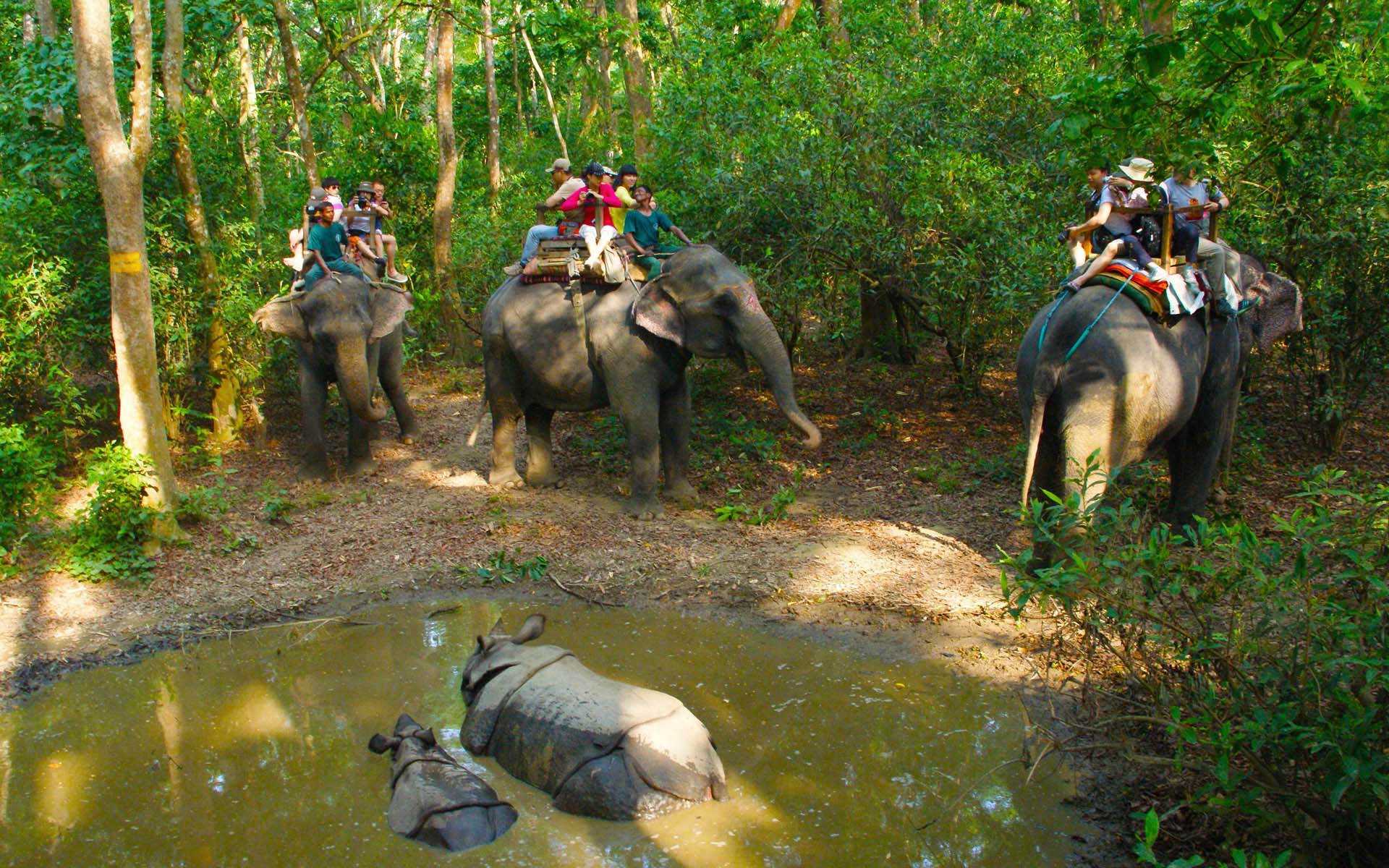
Nestled at the foot of the Himalayas, Chitwan has a particularly rich flora and fauna and is home to one of the last populations of single-horned Asiatic rhinoceros and is also one of the last refuges of the Bengal Tiger. Chitwan National Park (CNP), established in 1973, was Nepal’s first National Park. Located in the Southern Central Terai of Nepal, it formerly extended over the foothills, the property covers an area of 93,200 hectares, extends over four districts: Chitwan, Nawalparasi, Parsa and Makwanpur. The park is the last surviving example of the natural ecosystems of the ‘Terai’ region and covers subtropical lowland, wedged between two east-west river valleys at the base of the Siwalik range of the outer Himalayas. The core area lies between the Narayani (Gandak) and Rapti rivers to the north and the Reu River and Nepal-India international border in the south, over the Sumeswar and Churia hills, and from the Dawney hills west of the Narayani, and borders with Parsa Wildlife Reserve to the east. In 1996, an area of 75,000 hectares consisting of forests and private lands and surrounding the park was declared as a buffer zone. In 2003, Beeshazar and associated lakes within the buffer zone were designated as a wetland of international importance under the Ramsar Convention.
Sagarmatha National Park:
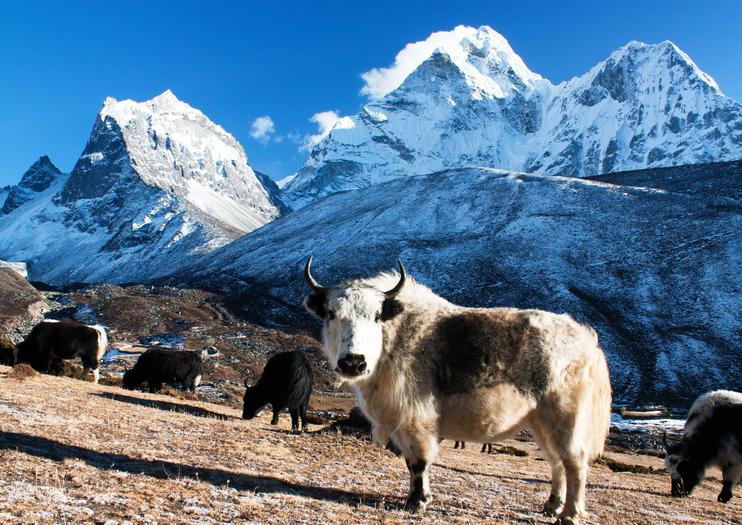
Including the highest point on the Earth’s Surface, Mount Sagarmatha (Everest; 8,848 m) and an elevation range of 6,000 m Sagarmatha National Park (SNP) covers an area of 124,400 hectares in the Solu-Khumbu district of Nepal. An exceptional area with dramatic mountains, glaciers, deep valleys and seven peaks other than Mount Sagarmatha over 7,000 m the park is home to several rare species such as the snow leopard and the red panda. A well-known destination for mountain tourism SNP was gazetted in 1976 and with over 2,500 Sherpa people living within the park has combined nature and culture since its inception. Encompassing the infinitely majestic snow-capped peaks of the Great Himalayan Range, the chain of mountains including the world’s highest Mt. Sagarmatha (Everest) and extensive Sherpa settlements that embody the openness of SNP to the rest of the world. The carefully preserved natural heritage and the dramatic beauty of the high, geologically young mountains and glaciers were recognized by UNESCO with the inscription of the park as a world heritage site in 1979. The property hosts over 20 villages with over 6000 Sherpas who have inhabited the region for the last four centuries. Continuing their traditional practice of cultural and religion including the restriction of animal hunting and slaughtering, and reverence of all living beings. These practices combined with indigenous natural resource management practices have been major contributing factors to the successful conservation of the SNP. The constantly increasing numbers of tourists visiting the property, 3,600 visitors in 1979 to over 25000 in 2010, has immensely boosted the local economy and standard of living with better health, education, and infrastructure facilities. One initiative of SNP has been to implement a buffer zone (BZ) program to enhance protection and management of the property and was motivated by a desire to enhance conservation in combination with the improved socio-economic status of the local communities through a revenue plow back system. The SNP area is also the major source of glaciers, providing freshwater-based benefits for the people downstream. In addition to conservation of the values of the property, a priority of the park is to monitor the impacts of global warming and climate change on flora, fauna and Sherpa communities.
Parsa Wildlife Reserve:
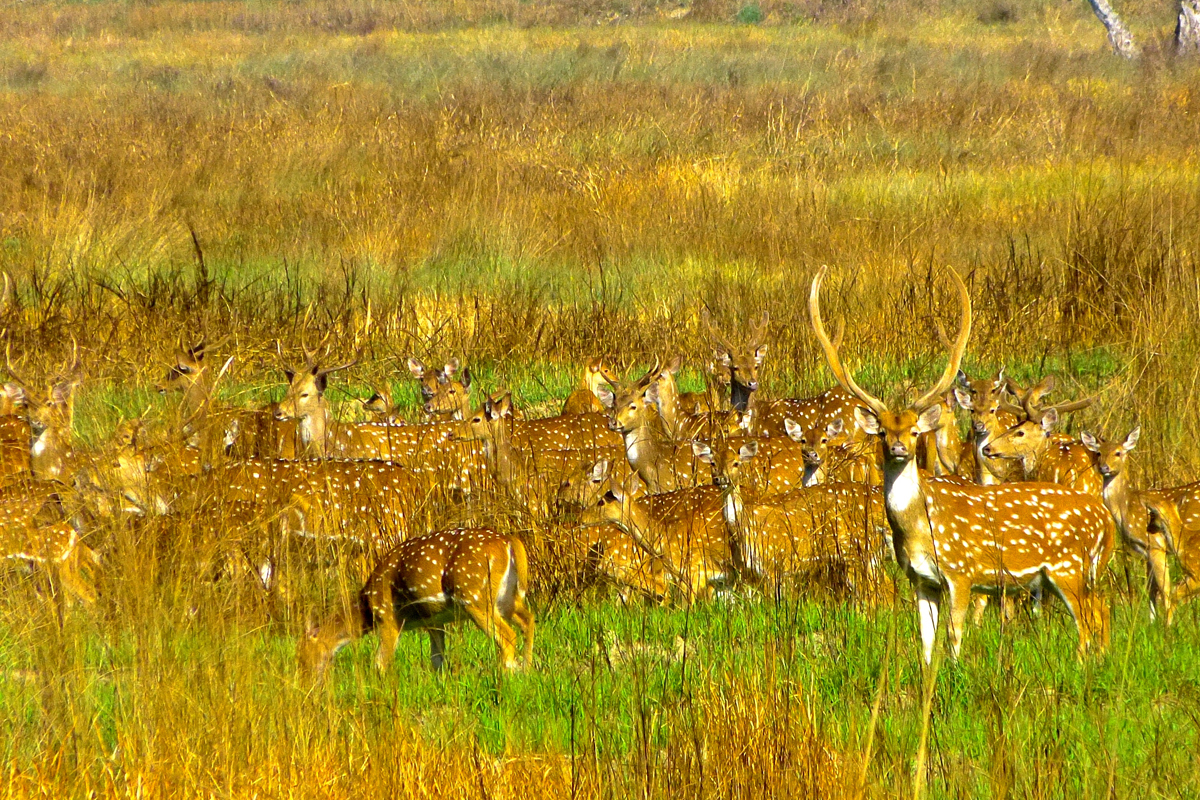
Located in South Central Nepal right next to its more famous cousin Chitwan, Parsa Wildlife Reserve is a National Wildlife Park in its own right. Although in the past, the Park has not been set up for tourists, that is now changing and although there aren’t any actual lodges in the Park, there is a small guesthouse with 4 rooms at the Park HQ. Access is easy and it is more than possible to visit the Park during normal viewing months. If you are interested in visiting Parsa you would normally stay outside about an hours drive away in either Hetuada or Birgunj. The reserve supports a good population of wild elephant, tiger, leopard, sloth bear, gaur, blue bull and wild dog. It’s believed that a lot of the adult tigers from Chitwan end up here (probably to get away from the tourists!). Other common animals spotted include various deer – sambar, chital, hog and barking deer as well as Langur monkeys, striped hyenas, ratels, palm civets and jungle cats. Many species of snakes are found in the reserve due to the tropical climate, including king cobra, common cobra, krait, rat snake and the python. There are about 300 species of birds found in the reserve – Some of the common ones include giant hornbill, peafowl, red jungle fowl, flycatchers, and woodpeckers.
Bardiya National Park:
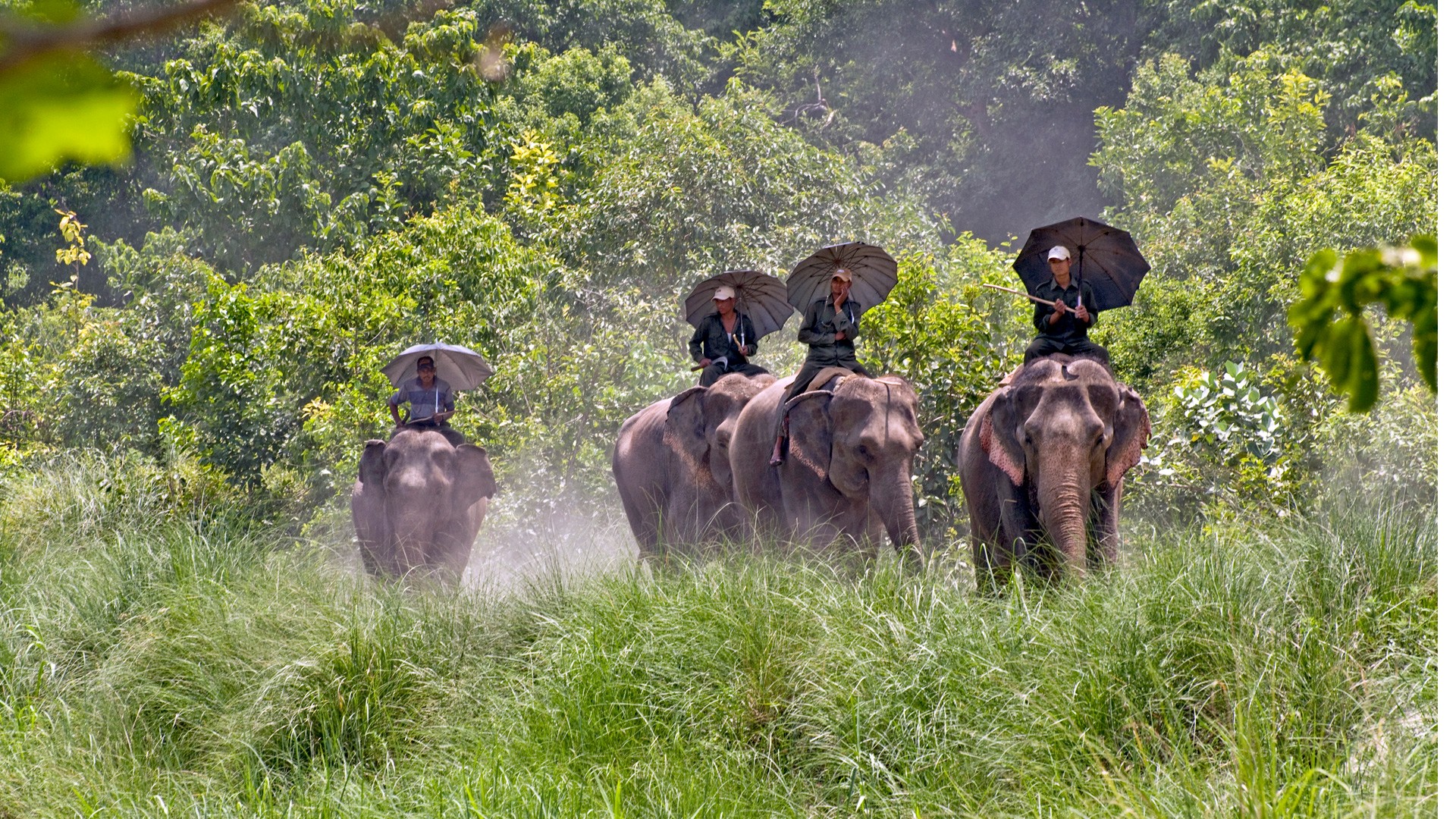
Bardia National Park is the largest national park in the Terai, a beautiful, unspoiled wilderness of sal forest, grassland and alluvial washes cut by the many fingers of the Karnali River. Largely unpopulated, it is often described as what Chitwan National Park was like 30 years ago, before its commercial development. One can raft through the park for hours on end and not encounter another person. The park suffered greatly during the Maoist insurgency of the 1990s. Tourism dried up, lodges were mothballed and wildlife was hit hard by poaching, particularly the rhino population. The good news is that this damage is now being reversed, with 31 rhino being counted in 2014, and five more transferred from Chitwan in 2017. The park may be inaccessible from May to September due to flooding.
Shuklaphanta National Park:
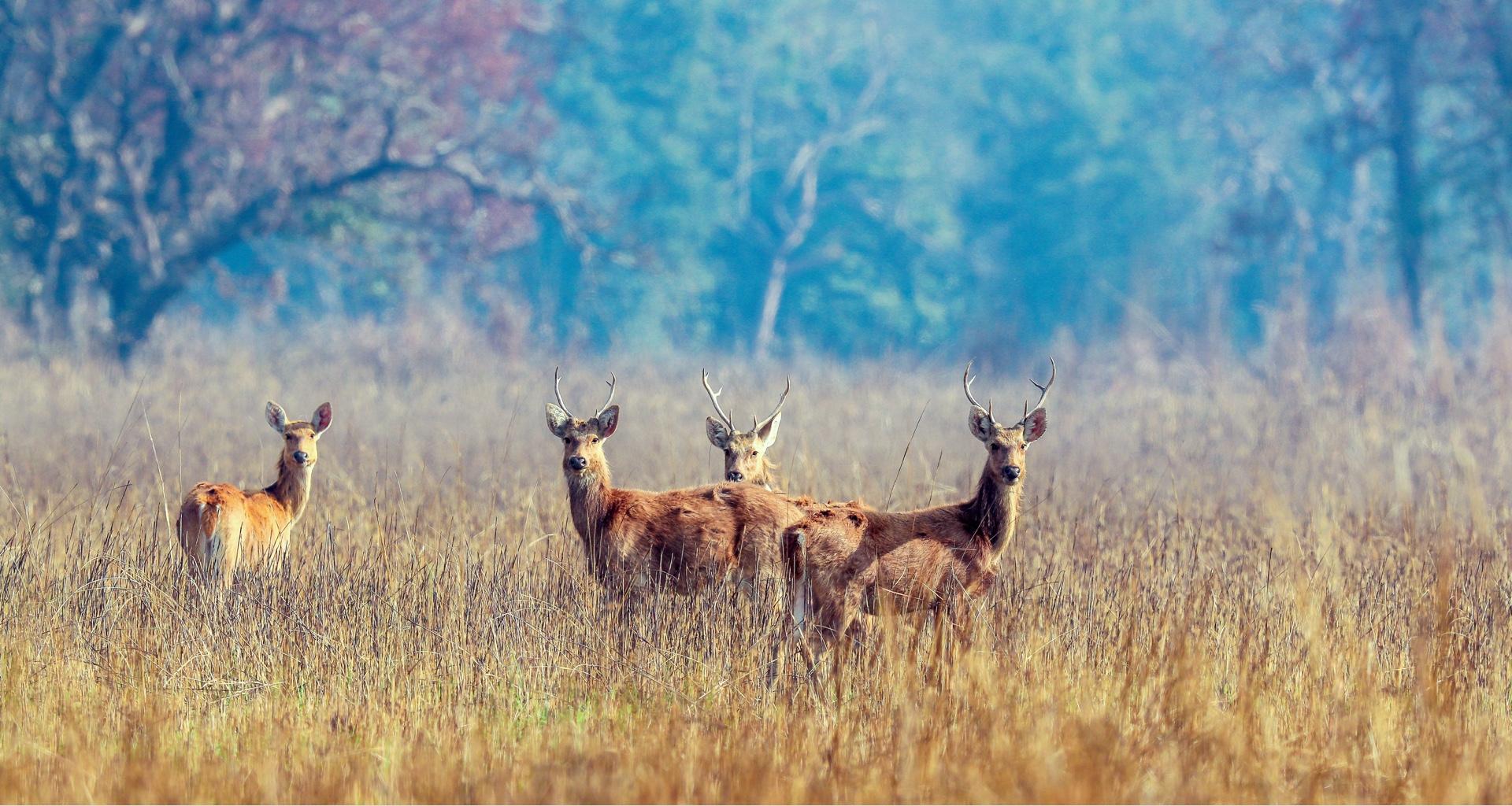
Shuklaphanta National Park is located in South West Nepal: It is the largest grassland area in lowland Terai. The park mainly consists of forests of Chir Pine, Fir and Hill Sal set within riverbeds and wetlands. Over 350 bird species to date have been recorded within the park. Shuklaphanta is home to forty-six species of mammal of which the most famous is The Royal Bengal Tiger. In fact, the chances of spotting a tiger in the reserve are greater here than anywhere else in Nepal. There are between eighteen and twenty-two breeding adults in what is a relatively small area. Regular monitoring of tiger is maintained using camera traps. The park is a classic example of people working together to preserve their environment. It is very well maintained in conjunction with Rangers and the local community under The Shuklaphanta National Park project an integral part of conservation issues nowadays. These include regenerative forestry, biogas production, and school eco clubs. Great Birding: A journey along the Terai in the south of Nepal visiting major National Parks and Ramsar sites along the way, wonderful chances for photography, can be from 15 to 21days: We stay in jungle lodges in the Terai…Over 600 bird species. You also have an opportunity to spot a tiger, you are guaranteed to see One-horned Rhino and you can go bathe with an elephant if you want to..great photographic experiences Ramsar sites (Migration November to end of February) with specialist Birding guide and all backup and support.
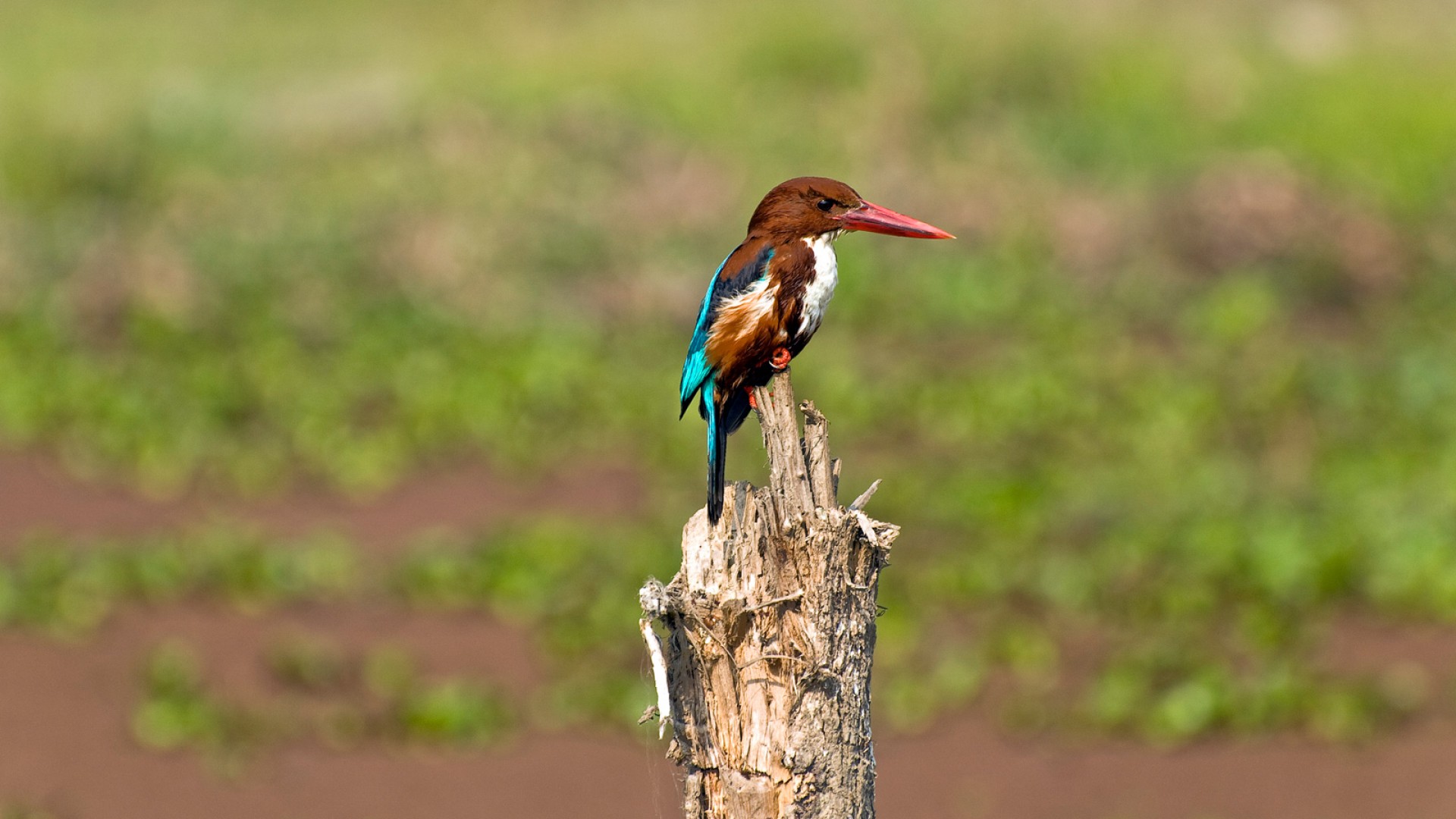
Notable Birds: Spiney Babbler / Ibisbill / Great Slaty Woodpecker / Bengal Florican / Bristled Grassbird / Hodgson Bushchat / Black-capped Kingfisher and Finn’s weaver.

